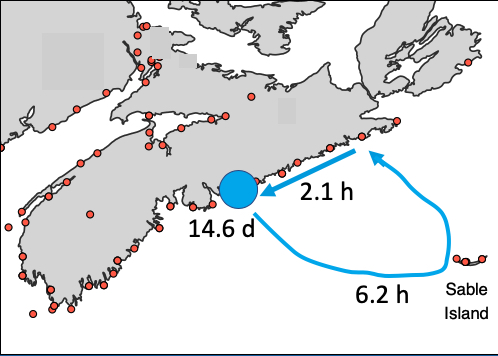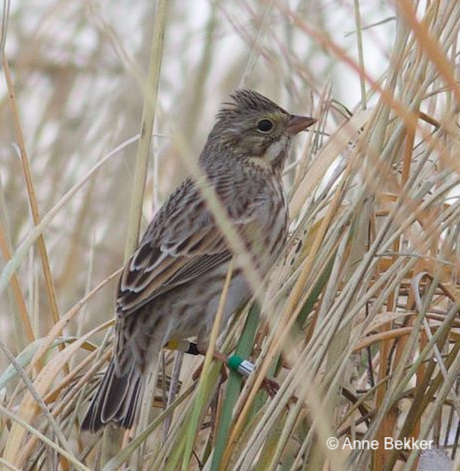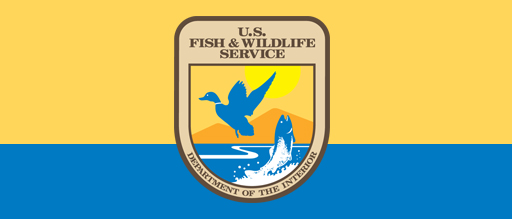From Virginia to Sable (as the sparrow flies)
From thousands of "pings" at radio towers as radio-tagged birds fly by, Syd Bliss made this animation of actual birds migrating north.
You can see that most birds don't shy away from crossing the Gulf of Maine. That includes young birds who, in their first fall, tend not to risk it.
Also, notice how most birds pause near Halifax, Nova Scotia, before jumping off to Sable Island. Those beaches might be especially important for their survival.


Try, try again
Even when birds wait near Halifax for westerlies to help them home, they can still have false starts. Like the bird whose track's shown here.
It pause for 14.6 days (the big blue dot), before setting off for Sable Island.Then it disappeared for 6.2 hours (the shaky blue arrow), before showing up again.
When you're the weight of 5 teaspoons of sugar, flying alone over a cold desolate ocean, trying to find a thin fog-shrouded island, it's no surprise that the attempt is risky. This bird, like 9 other tagged ones, had to abort its mission.
Thanks to receiving towers all over the coast (red dots), we know it returned to shore near Canso, Nova Scotia, where it started a two-hour flight back to the beach where it started.
This bird ultimately made it to Sable Island, but many others might not. The risky flight might be hugely important in the life of these birds.
Fan favorites
Colour-banded birds that became international stars.
The Lighthouse Bird
One of the birds we banded on Sable Island in 2017, he was resighted nearly every year since near the jetty in Barnegat Lighthouse State Park, New Jersey. In summer 2020, a Parks Canada employee resighted him on Sable Island, presumably breeding.

The Avalon Bird
Also banded in 2017, this bird returned to the Avalon Seawatch in Cape May, New Jersey in winter 2018 and was spotted at the exact same location in winter 2019 by four different citizen scientists.

The Ipswich Ipswich
A great moment for the project was when this banded bird was sighted at Crane's Beach in Ipswich, Massachusetts - the very place where the Ipswich Sparrow was discovered 150 years before.

What's next?
There's plenty of work yet to do, even with just the data we already have.
Where'd they go?
Adults have a way of simply disappearing after we tag them on the island in the fall. Where do they go? Do they escape detection? Do their tags fall off? Do do they get lost at sea? And why just adults?
What do they like?
We've learned that particular beaches (like those near Halifax, Nova Scotia or on the Delmarva Peninsula) are especially important for this bird. Why? Is it protection from predators, abundant food, great weather, location on their route, or some combination?
What are the crunch times?
When in a bird's life journey does it make decisions that determine whether it will live or die, have many offspring or few? That's the ultimate question we set out to answer, and with just a few more years of data (much of it gathered by all of you) we might have the answer.





